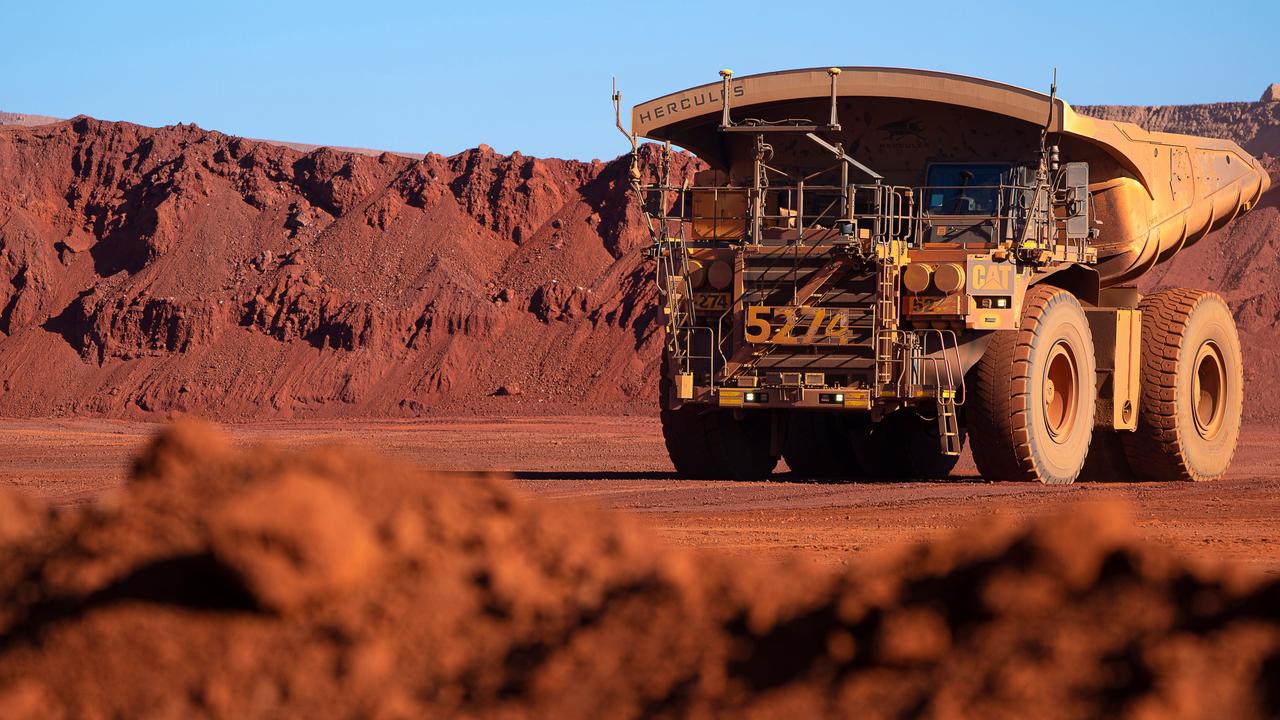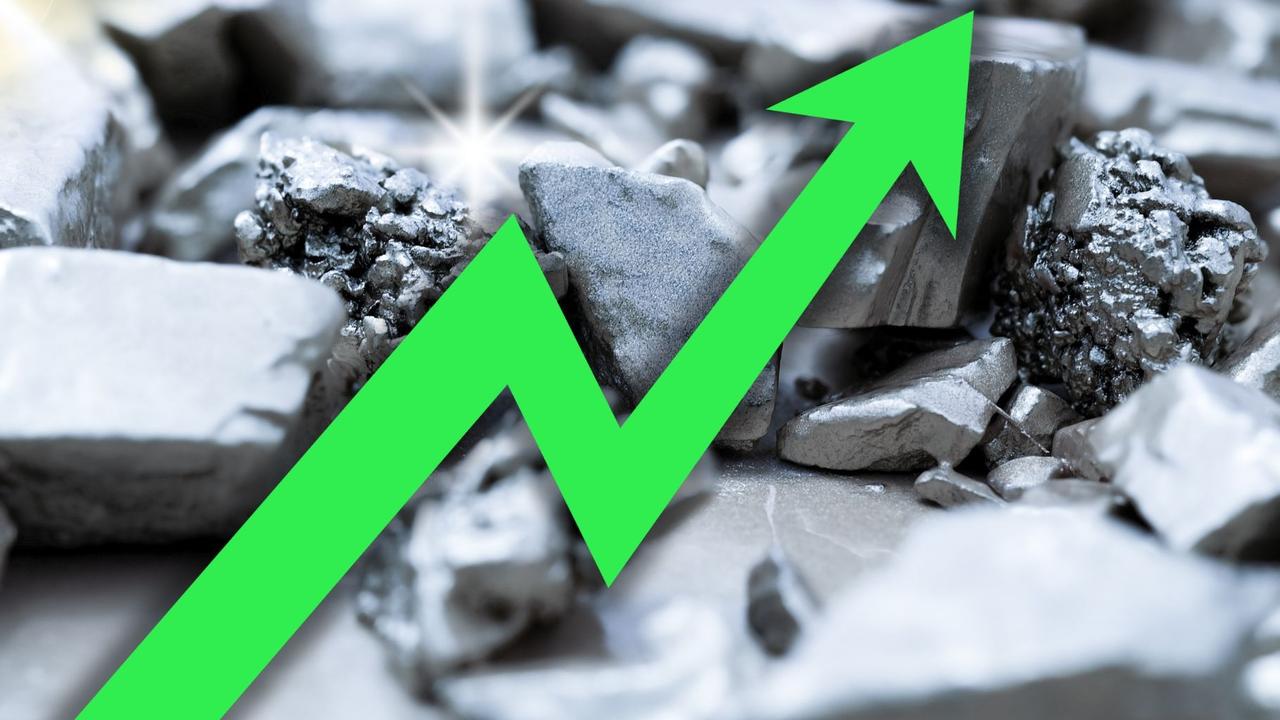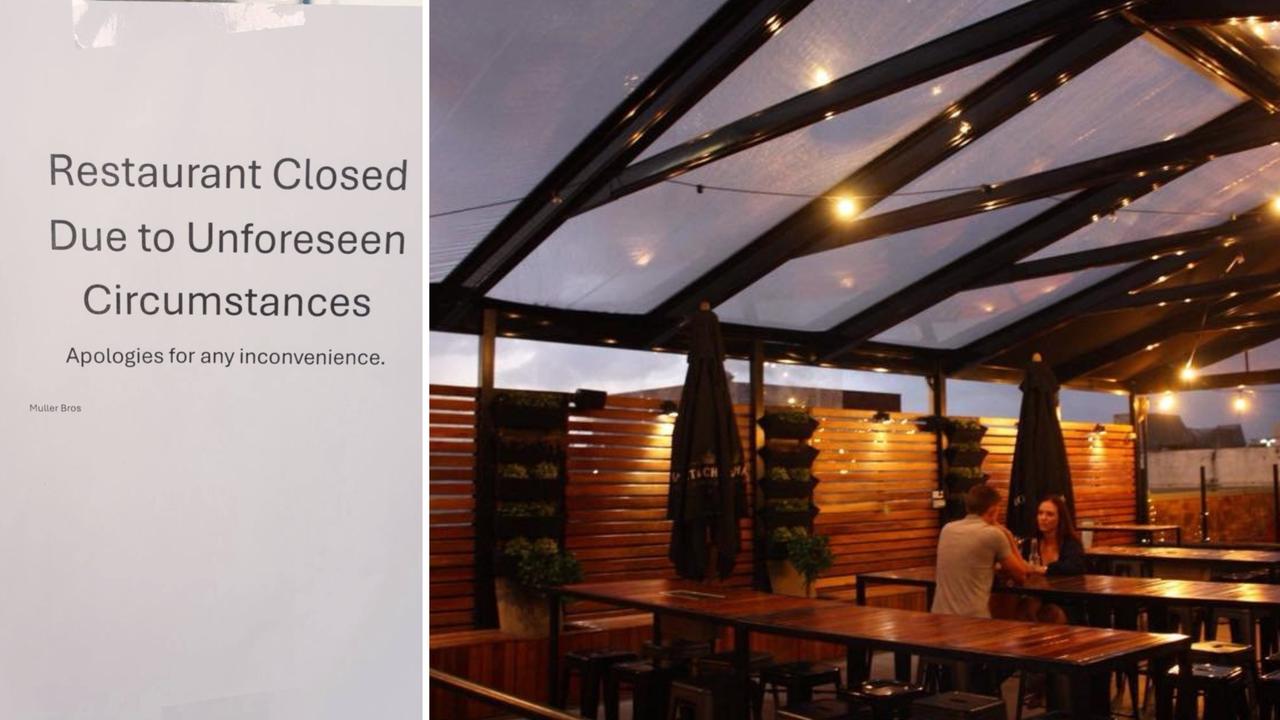Big miners like Rio Tinto are pushing against limits of technology in the green race
The world’s biggest miners are spending billions of dollars as they square up to the next big energy hurdle: switching off diesel.
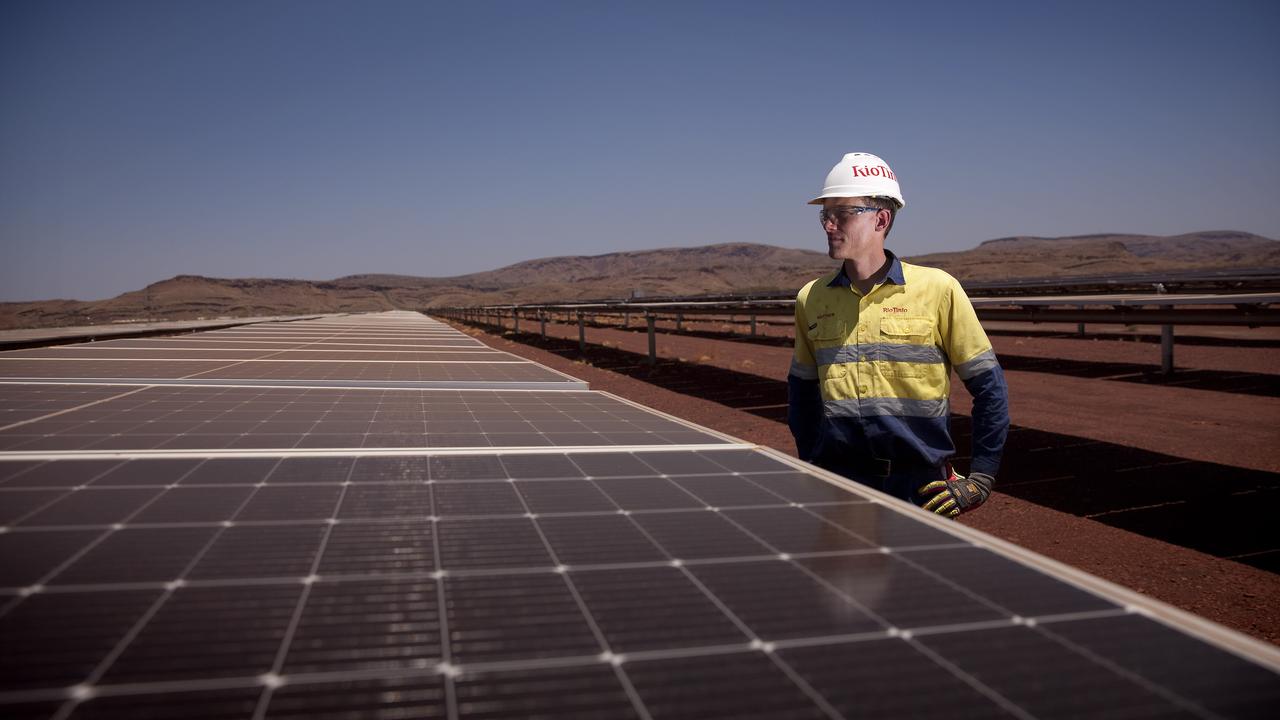
Business
Don't miss out on the headlines from Business. Followed categories will be added to My News.
Stretching out behind a low red ridge of the remote Pilbara desert sits a sea of solar panels.
Hectares of smooth glass and aluminium neatly lined up at the Gudai-Darri iron ore mine look at odds with everything you’d expect to see at a busy mine site – from giant haul trucks to a hulking processor.
The solar panels have been installed by iron ore giant Rio Tinto and combined they pump out 34MW. It’s enough to power the Pilbara coastal city of Karratha located hundreds of kilometres away, but it’s only a fraction of the miner’s power needs. And the energy output is limited to daylight for the site that runs around the clock.
Rio is spending another $US600m ($950m) building another 230MW of power, including wind and massive batteries. In total, the miner expects it will need more than 600MW of wind and solar generation to displace its existing gas-fired power network which spans an area the size of Belgium.
For the miners like Rio, switching their power grids across to renewables as the race to pull carbon out of their operations represents a significant logistical challenge which is far certain. Then they face the next big hurdle: replacing diesel.
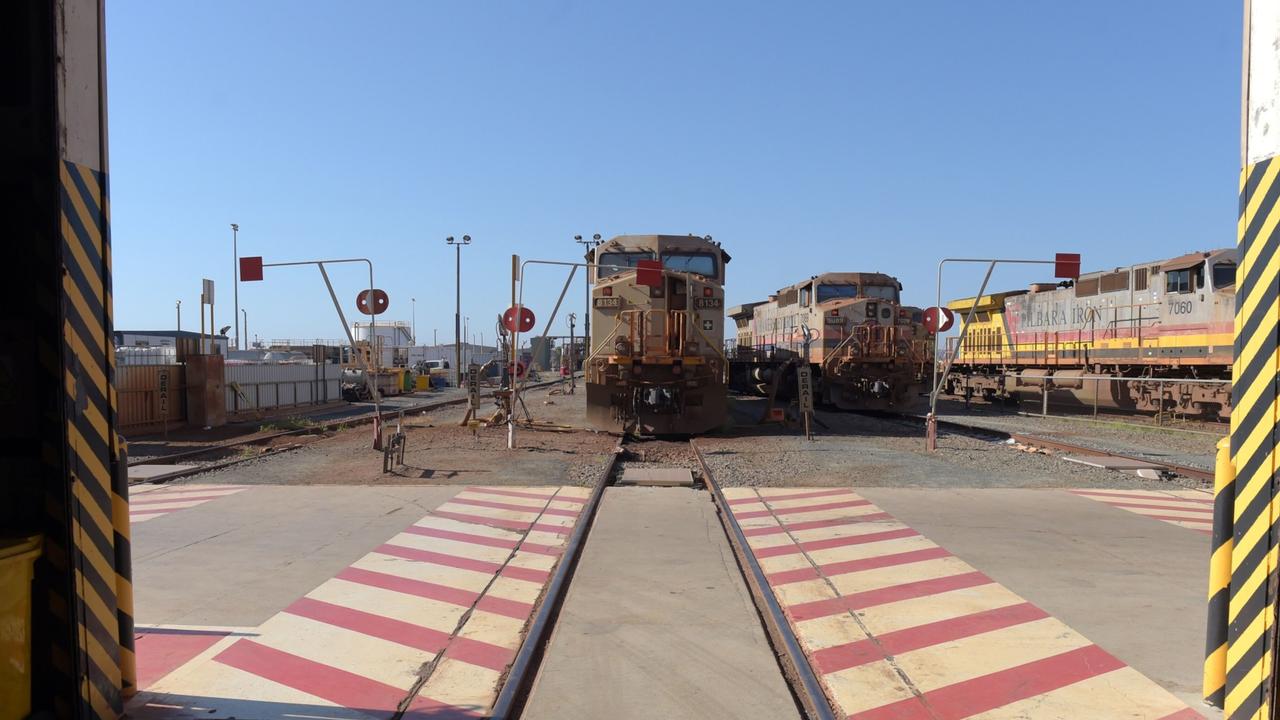
The commercial technology needed to convert hundreds of giant haul trucks, heavy vehicles and locomotives to green energy simply does not exist. Trucks don’t have enough staying power uphill, they can’t carry as much, and the long down time for charging is problematic.
Decarbonisation among miners is a big ambition which is pushing the world’s biggest, including BHP and Fortescue, right up against the very limits of technology.
Miners Rio Tinto, BHP and Fortescue are collectively spending billions of dollars developing plans to re-engineer their operations so they run clean and green. They are pushing their heavy equipment suppliers – GE, Caterpillar, Volvo and Komatsu – to rewrite the rules in weaning from diesel.

The massive amount of spending on decarbonisation also means the Pilbara, home to some of the harshest industrial environments, is ground zero of the world’s biggest green experiment.
If they get it right, cheap energy will underpin their operations for decades and the technology developed from the mining investment will trickle down to heavy machinery used by industry and construction in the city.
But the hard fact is the challenge is expensive, threatens to be disruptive and is not certain of success.
Rio Tinto’s head of iron ore, Simon Trott, says there is a determination to get it done with decarbonisation at the centre of the miner’s strategy. Even so, Trott acknowledges the work needed represents “an enormous undertaking”. Rio Tinto has 430 haul trucks and 220 heavy locomotives across its network of Pilbara mines.
Rio Tinto has committed to reach net zero by 2050 and to reduce greenhouse gas emissions by 50 per cent by the end of the decade. BHP also has a net zero target by 2050 and to lower its emissions by 30 per cent by the decade’s end.
‘Making it work’
Trott points out suppliers of heavy machinery are also moving in the direction of decarbonising and are working closely with all miners.
“We know we’ve got to decarbonise our own business. We know that the steel industry is going to decarbonise and this is an industry challenge. We are working with our suppliers to find a way,” he tells The Australian.
“Currently there is no technology available today to operate our diggers and trucks and trains, and that needs to be developed and you’ve got to have a path to that.”
While describing himself as a realist, Trott says he is “absolutely convinced” decarbonisation is going to happen.
“We’re going to work to make it happen,” he says.
Thanks to the power-hungry aluminium smelters around the world – including two in Australia – Rio Tinto has plans to spend as much as $US7.5bn by the end of the decade on its decarbonisation efforts.

BHP expects to spend about $US4bn over the next six years on decarbonisation projects around the world and is targeting proof-of-concept trials for electrified rail and diggers next year.
BHP last year charted the world’s first super-sized iron ore ships that are powered by LNG rather than high carbon-producing bunker fuel.
It is on the ground where diesel locos show the scale of the challenge ahead. Rio’s fleet transport iron ore from the mine to the port on carts that usually are more than 2.5km long.
But for loco to match that it will need to produce the equivalent of 13MW to 14MW of energy to haul their load. The latest battery powered locos in operation can only generate the equivalent of 20 per cent of this output.
Over the next two years Rio Tinto and other Pilbara miners will trial a new loco from US manufacturer GE. These can generate between 7-8MW. There’s four pilot locos on schedule to be delivered next year and most of their time will be treated as a R&D mission about how batteries on trains function, their limits and how they respond to tough conditions such as heat and humidity.
But without the 13-14MW benchmark, the practical implications of weaker locos means shorter trains and therefore a massive loss of production capacity.
One area of focus for the diesel challenge is the use of biofuels that are underpinned by a renewable feedstock, this is expected to offer a bridge to cutting carbon until battery technology catches up.
Green deal
Last week Rio Tinto took a major step in securing more green energy for its day-to-day operational needs for iron ore mining, signing on as the foundation customer with the Pilbara region’s traditional owners.
The deal is significant in that it gives a boost to the commercial arm of the Yindjibarndi Aboriginal Corporation, which has an ambitious plan to build as much as 3GWs of solar and wind to power the region. YAC will now work with Rio as a foundation customer on a plan to build up to 150MW of solar energy for exclusive use by the miner.
Rio’s power grid is currently underpinned by gas-fired power, but Trott says as more of the renewable energy comes onstream – such as the agreement with YAC or Rio’s own solar project – each one will defray the use of gas.
In recent weeks, Andrew Forrest’s Fortescue has been demonstrating its electric prototype haul truck to investors. Fortescue has the most lofty green targets of the big Australian miners, with a promise to have real net zero in place by 2030.
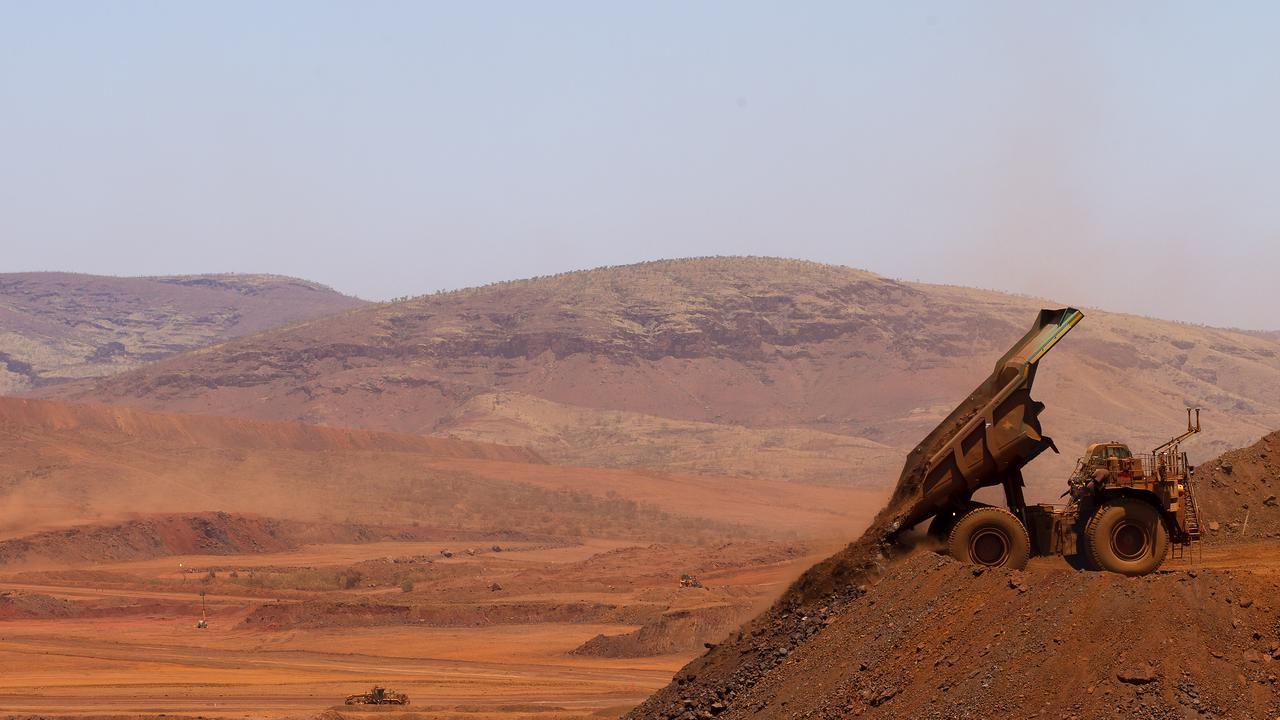
Without a diesel solution in place it’s ambitious to be sure. The miner currently pumps out two million tonnes of carbon annually – and with the ramp-up of its new Iron Bridge ore mine in the Pilbara over coming years this is forecast to exceed three million tonnes.
But with six years to go, Fortescue is running against the clock. Indeed many in the market expect the targets are more about promise than delivery.
Last year it paid $309m for the Williams Formula One racing team engineering offshoot Williams Advanced Engineering to access the latest in battery technology.
Fortescue’s battery powered haul trucks jointly built by Williams and German-Swiss industrial giant Liebherr, are a long way from being unleashed on to the daily grind of mines, and there are few indications about costs and reliability as well as how long it will take to reliably charge.
The weight of batteries are immense and one truck needs eight battery subpacks (each containing hundreds of battery cells).
Prototypes of hydrogen-powered trucks are also being developed. These too are a long way from being put under the daily pressure of mining.
Fortescue has a fleet of more than 350 haul trucks, 80 excavators, as well as dozens of locomotives it too wants to turn green.
The author travelled to the Pilbara as a guest of Rio Tinto
Originally published as Big miners like Rio Tinto are pushing against limits of technology in the green race


